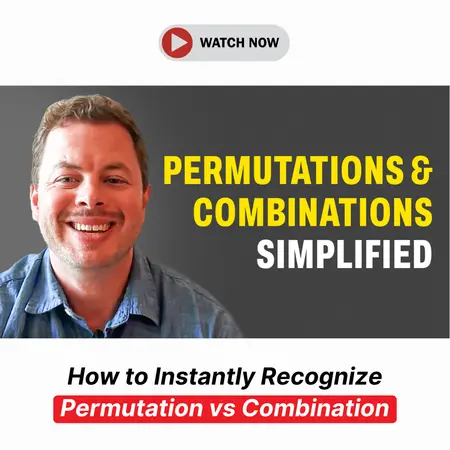Events & Promotions
|
|

GMAT Club Daily Prep
Thank you for using the timer - this advanced tool can estimate your performance and suggest more practice questions. We have subscribed you to Daily Prep Questions via email.
Customized
for You
Track
Your Progress
Practice
Pays
Not interested in getting valuable practice questions and articles delivered to your email? No problem, unsubscribe here.
- Nov 20
07:30 AM PST
-08:30 AM PST
Learn what truly sets the UC Riverside MBA apart and how it helps in your professional growth - Nov 22
11:00 AM IST
-01:00 PM IST
Do RC/MSR passages scare you? e-GMAT is conducting a masterclass to help you learn – Learn effective reading strategies Tackle difficult RC & MSR with confidence Excel in timed test environment - Nov 23
11:00 AM IST
-01:00 PM IST
Attend this free GMAT Algebra Webinar and learn how to master the most challenging Inequalities and Absolute Value problems with ease. - Nov 25
10:00 AM EST
-11:00 AM EST
Prefer video-based learning? The Target Test Prep OnDemand course is a one-of-a-kind video masterclass featuring 400 hours of lecture-style teaching by Scott Woodbury-Stewart, founder of Target Test Prep and one of the most accomplished GMAT instructors.
Kudos
Bookmarks
reply2spg
First we need to recognize that the given information tells us that the 7 people consist of:
- a sibling trio, which we'll call "the TRIPLETS"
- a sibling pair, which we'll call "the TWINS"
- and another sibling pair, which we'll also call "the TWINS"
So, P(two are NOT siblings) = P(1st choice is a triplet AND 2nd choice is not a sibling OR 1st choice is a twin AND 2nd choice is not a sibling)
= P(1st choice is a triplet) x P(2nd choice is not a sibling) + P(1st choice is a twin) x P(2nd choice is not a sibling)
= (3/7 x 4/6) + (4/7 x 5/6)
= 12/42 + 20/42
= 32/42
= 16/21
Answer: E
Kudos
Bookmarks
IanStewart
Hi, ian.
Would you mind explaining approach 3 that bunuel accounted for?
I am not sure if I understand the multiplication by 2 for the 2-sibling group.
Does order matter here? Not sure why picking 1-2, 3-4 then the 5-6-7 are different than picking 5-6-7 first, then [1-2], [3-4].
Understanding the concept by picking one person at a time was easier for me: 1/7 to pick any*5/6 because one person is picked and the other person in the group is a sibling that is picked up. The numerator is the total ways of picking a non-sibling pair, order does not matter and position does not matter, then you multiply by 4 because there are 4 diff ppl with 1-sibling to pick from.
Posted from my mobile device
Hi, ian.
Would you mind explaining approach 3 that bunuel accounted for?
I am not sure if I understand the multiplication by 2 for the 2-sibling group.
Does order matter here? Not sure why picking 1-2, 3-4 then the 5-6-7 are different than picking 5-6-7 first, then [1-2], [3-4].
Understanding the concept by picking one person at a time was easier for me: 1/7 to pick any*5/6 because one person is picked and the other person in the group is a sibling that is picked up. The numerator is the total ways of picking a non-sibling pair, order does not matter and position does not matter, then you multiply by 4 because there are 4 diff ppl with 1-sibling to pick from.
Posted from my mobile device
Kudos
Bookmarks
M838TE
Bunuel explained that solution a bit further down on page one of this thread. He first divided the seven people into sibling groups, which is a complication there's no need to think about here. We have a 4/7 probability of picking someone with one sibling first, then a 1/6 chance of picking their only sibling second. We have a 3/7 probability of picking someone with two siblings first, then a 2/6 chance of picking one of their two siblings second. So the probability we get a pair of siblings is (4/7)(1/6) + (3/7)(2/6) = 5/21, and the probability we don't is 1 - (5/21) = 16/21.
You could also use this approach, but solve directly, by finding the probability right away that you do not pick a sibling on the second selection (then you get (4/7)(5/6) + (3/7)(4/6) = 16/21 and do not need to subtract the result from 1 at the end). Bunuel's method #3 does essentially that, though it considers more cases, because it treats each sibling group separately.










